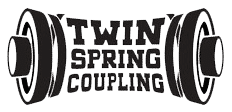The Role of Universal Joints in Automotive Drivetrains
Universal joints, also known as U-joints, are a critical component in the drivetrain of many vehicles, particularly those with rear-wheel or four-wheel drive. These unsung heroes of the automotive world play a vital role in transmitting power from the engine to the wheels, allowing for smooth and efficient power delivery.
What are Universal Joints?
A universal joint is a mechanical coupling that connects two rotating shafts, enabling them to transmit rotational motion at varying angles. In a vehicle, the U-joint connects the driveshaft to the transmission on one end and the differential on the other. This allows the driveshaft to move up and down with the suspension, while still delivering power to the wheels.
The basic design of a U-joint consists of a cross-shaped spider with four trunnions, or journals, that are fitted with needle roller bearings. These bearings allow the spider to pivot and rotate, accommodating the changes in the angle between the two shafts. The spider is then secured to the two yokes, or forks, on either end of the driveshaft by means of a retaining cap or snap ring.
The Importance of U-Joints in Drivetrains
U-joints play a crucial role in the overall performance and longevity of a vehicle’s drivetrain. Without them, the rigid driveshaft would be unable to flex and move with the suspension, leading to a harsh, uncomfortable ride and potential damage to other drivetrain components.
The primary functions of universal joints in a vehicle’s drivetrain include:
Angle Compensation: U-joints allow the driveshaft to operate at an angle, compensating for changes in the suspension as the vehicle moves over uneven terrain. This ensures a smooth and consistent power delivery to the wheels.
Vibration Dampening: The pivoting action of the U-joint helps to absorb and dampen any vibrations that may be transmitted through the driveline, reducing the risk of damage to other components.
Driveshaft Flexibility: The U-joint’s ability to flex and pivot allows the driveshaft to move up and down with the suspension, preventing binding and ensuring a seamless power transfer.
Torque Transmission: U-joints are designed to transmit the high levels of torque generated by the engine to the wheels, without compromising the integrity of the drivetrain.
Common U-Joint Failure Modes and Symptoms
Like any mechanical component, universal joints are subject to wear and tear over time. Some of the most common causes of U-joint failure include:
Lack of Lubrication: Proper lubrication is essential for the smooth operation of U-joints. If the joints are not regularly greased, the bearings can seize up, leading to premature wear and failure.
Misalignment: Changes in the vehicle’s ride height, either through suspension modifications or normal wear, can cause the U-joints to operate at an angle that exceeds their design specifications, leading to accelerated wear.
Excessive Stress: Vehicles used for heavy towing, off-road driving, or other high-stress applications can put additional strain on the U-joints, causing them to wear out more quickly.
Corrosion: Exposure to moisture, dirt, and other environmental factors can lead to the deterioration of the U-joint’s seals and bearings, resulting in premature failure.
When a U-joint begins to fail, it can exhibit a variety of symptoms, including:
- Squeaking or clicking noises when starting to move or shifting from drive to reverse
- Vibrations felt throughout the vehicle while driving at speed
- Transmission fluid leaks from the rear of the transmission
- Difficulty in shifting or a “clunking” noise when changing gears
Ultimately, a complete failure of the U-joint, resulting in the driveshaft becoming disconnected from the vehicle.
Choosing the Right Replacement U-Joints
When it comes time to replace worn or damaged U-joints, it’s essential to choose high-quality replacement parts that are specifically designed for your vehicle’s make, model, and year. Inferior or generic U-joints may not provide the same level of performance and durability as OEM-spec components.
Some key factors to consider when selecting replacement U-joints include:
Type and Size: U-joints come in different designs, such as the cross and roller type or the ball and trunnion type, and in various sizes to accommodate different driveline configurations.
Lubrication: Some U-joints require regular greasing, while others are designed to be maintenance-free. Be sure to choose the appropriate type for your vehicle.
Warranty: Look for U-joints that come with a comprehensive warranty, as this can provide peace of mind and protect your investment in the long run.
Reputation: Opt for U-joints from reputable manufacturers with a proven track record of quality and reliability, such as Spicer, Moog, SKF, GMB or other industry-leading brands.
By investing in high-quality replacement U-joints and following the recommended maintenance schedule, you can help ensure the longevity and smooth operation of your vehicle’s drivetrain, ultimately enhancing its performance and reliability.
Conclusion
Universal joints are the unsung heroes of the automotive world, playing a vital role in the smooth and efficient transfer of power from the engine to the wheels.
By understanding the importance of U-joints, their common failure modes, and the importance of choosing the right replacement parts, vehicle owners can help ensure the long-term health and performance of their vehicle’s drivetrain.
Whether you’re a seasoned mechanic or a DIY enthusiast, taking the time to properly maintain and replace your vehicle’s U-joints can go a long way in keeping your ride running smoothly for years to come.

